- Home
- Paul Christopher
The Sword of the Templars t-1 Page 18
The Sword of the Templars t-1 Read online
Page 18
“Quick!” Holliday urged, looking over his shoulder. The flashlight beams behind them were getting brighter as their pursuers approached. They had to get into the relative safety of the outlet tunnel before Kellerman’s men reached the cave.
“What if it gets deeper?” Wanounou asked nervously. “I told you, I can’t swim.”
“I’ll protect you.” Peggy grinned. She put her arm around the professor’s waist, and they stepped into the water with Holliday right behind, holding the alabaster jar.
The swift undertow took all three of them by surprise, sweeping them off their feet and tumbling them into the lake’s narrow outlet. Wanounou yelled, but the sound was swallowed up as he drank in a mouthful of the freezing water and gagged. He began flapping his arms and struggling in the water, but Peggy managed to get his head above the surface, her arm now crooked, elbow under his chin, as they hurtled along the underground river.
“You’re okay! You’re okay!”
Peggy turned her head, looking for Doc in the almost absolute darkness, then spotted the sweeping beam of his flashlight a few yards behind, swinging wildly back and forth as the speeding current dragged him along.
Suddenly Peggy felt something hard slam against her back and realized that it was the stone bottom of the stream. It was getting shallower, not deeper. She began to call out a warning to Holliday, but before she could speak the world dropped out from beneath her, and then she and Wanounou were sliding down a long curving tube, the rock slippery with the same sort of microbial muck she’d felt under her feet when she swam out to the island in the pool.
She and Wanounou clutched each other desperately as the tube descended, slamming them back and forth with every twist and turn, the rush of water from the pool following the course it had carved through the rock for a million years. Then, abruptly, there was daylight, and just as abruptly they were thrown out into the air as the tube emptied into another cave, this one with an entrance open to the sea.
They dropped six or seven feet, straight down into the ocean, and once more Wanounou was struggling as he breathed in water, choking and flailing. Again Peggy dragged him to the surface as she oriented herself, then pointed him toward a narrow shelf of beach a few yards away. He slapped the water with both hands, doing a frenzied version of the dog paddle.
After three steps she felt the bottom beneath her feet. Wanounou reached safety first and slumped down onto the sand. There was a loud splash behind her, and Peggy turned as Doc came flying out of the water’s yawning exit point on the sidewall of the cave and plummeted into the water. A few seconds later he surfaced, the alabaster jar still clutched under one arm. Peggy gave him a hand, and they staggered to the shore and dropped down on the little beach.
Finally they had a moment to get their bearings.
“I lost the hammer,” said Peggy, pushing hair out of her eyes and getting to her feet. “Where the hell are we?” Beside her, Wanounou, gasping and retching, was still coughing out the last of the water from his lungs.
Holliday looked around the chamber. It was a typical sea cave, narrow and relatively shallow, perhaps fifty feet across and a hundred feet deep, the far end sloping up into a sandy beach with darker limestone chert pebbles strewn around. The walls arched steeply up to a rotted stone ceiling, and there was sea salt encrusted here and there, left by the rising and falling tides. At the sea end of the cave the Mediterranean glowed like sapphire in the early-afternoon sun.
There was evidence of recent occupation everywhere: rusting fifty-gallon drums lined up at the far end of the cave beyond the high-tide line, a coil of rope, several broken crates, and something that looked like a portable air compressor of some kind.
Tethered to a roughly hewn pier carved out of the ancient rock was what appeared to be a perfectly sea-worthy RIB-a rigid-inflatable boat, military grade, painted in shades of dull gray and brown, with a shield and bat wing emblem on the prow. It was about fourteen feet long with a center-mounted console and some kind of inboard drive.
“Is that our ride?” Peggy asked.
“It is if I can get it started,” answered Holliday. He handed Peggy the alabaster vase, then crossed the little strip of beach and climbed up onto the stone pier. He walked along it to the point where the boat was tethered. The boat was neatly attached to a very old-looking iron ring with a round turn and two half hitches, a sailor’s knot that even a hurricane couldn’t undo.
Holliday dropped down into the boat and made his way to the console. It looked simple enough: five gauges, all in Hebrew, a key-slot ignition, a starter button, a throttle lever, and a padded plastic wheel for steering.
There was a small panel underneath the wheel. Holliday reached down, opened it, and pulled out a handful of wires. There was a green one, a yellow, and a red. Presumably the red was the hot wire, and the green was the crank.
He stripped off the insulation on both and touched them to each other. All the gauges lit up. Leaving the two wires connected, he hit the starter button, and the engine fired instantly.
“Your chariot awaits,” said Holliday.
Peggy untied the boat, and she and Wanounou climbed down into it. Holliday eased them away from the pier, then spun the wheel, turning the small boat in a tight circle until the bow was facing toward the cave exit and the open sea.
“Which one of these gauges is fuel?” Holliday asked.
“That one,” answered Wanounou, pointing. “According to it we’ve got half a tank.”
“How far is Haifa?” Holliday asked.
“Bat Galim is about seven miles or so. The harbor is a little farther around the headland,” said Wanounou.
“Then let’s get the hell out of Dodge,” said Holliday, and he pulled back on the throttle.
22
The inflatable made the short trip up the coast in a little less than half an hour, with Wanounou turning several shades of green in the process. Not only wasn’t he a swimmer, he wasn’t much of a sailor either.
Rather than get into a tangle of bureaucracy by trying to return the boat to its rightful owners Holliday simply drove it up onto the beach in front of the Mйridien Hotel and left it there.
Getting back to Jerusalem with the alabaster vase turned out to be just as simple. At the hotel they bartered with a taxi driver named Bashir for a two hundred shekel ride back to the Land Cruiser, which they found exactly where they’d left it, apparently unharmed and untouched. There was no sign of any other vehicle except for a fresh set of tread marks in the soft dirt by the side of the road. A good-sized truck or SUV, from the width of the tires.
As far as Holliday could tell no one followed them on their return to Jerusalem. After a completely uneventful journey on the busy highway they arrived back at the university shortly after five o’clock that afternoon. They went to Wanounou’s lab in the basement of the Archaeology Building.
The lab was a long, narrow, windowless room approximately twenty feet wide and the length of an Olympic swimming pool. The length of one entire wall was taken up with floor-to-ceiling metal shelving units, and the opposite wall was a collection of benches, computer work stations, and equipment pods that ranged from spectroscopes and comparison microscopes to laser saws, portable X-ray machines and megasonic cleaning tanks.
The center of the room, from one end to the other, was taken up by a long row of light-box tables for sorting, examining, and preliminary sorting of artifacts. On the tables were trays of tools, solvents, acids, and adhesives to aid in conservation, ongoing maintenance, and reconstruction of individual finds.
It was midsummer, and the laboratory was empty except for Peggy, Holliday, and the professor; the rest of the faculty and most of the grad students were either in the field or on holiday.
Wanounou took the vase to one of the light-box tables and switched it on. The table glowed bright white. He sat down on a stool, with Peggy and Holliday on either side. He took a pair of disposable gloves out of a pop-up box, then selected a long-bladed X-Acto knife from one of
the trays. He weighed the jar on a small digital scale and noted the weight in a notebook he’d taken from a drawer in the table. That done, he pulled over an illuminated fluorescent magnifier and examined the jar more closely.
“Sealed with some sort of mastic,” said Wanounou.
“Mastic?” Peggy asked.
“A resin gum. They used it for medicinal purposes in the Middle Ages, but they also used it as a sealant, like a gummy varnish. It dries that yellowy color and gets very brittle.”
“Isn’t there some kind of solvent?” Holliday said, eyeing the X-Acto knife.
“Sure, there’s even some pretty inert ones, but it’s safer to chip it off; less likely to damage whatever’s inside.”
Using the scalpel-bladed knife, Wanounou scored the surface of the sealant covering the ceramic stopper of the jar, working the gouge deeper and deeper until after about ten minutes’ patient work the knife slipped into the crack between the stopper and the vase itself.
As Peggy and Holliday watched, Wanounou put the knife down, chose a pair of long-nosed, locking surgical forceps, and gently lifted the lid off the vase. He set the lid aside and tilted the vase so the light from the magnifying lamp shone into it.
“Anything inside?” Peggy asked.
“Something.”
“What?”
“Hold on.”
The professor picked up the forceps again and eased them down into the neck of the vase. Concentrating hard, he worked the forceps around for a moment, then withdrew them.
“Wrong tool,” he said. He rummaged around in the tray and found what he was looking for. He held it up.
“Looks like something I saw at my gynecologist’s,” said Peggy uncomfortably. They looked like the surgical version of cooking tongs with blades that locked like vise grips.
“Close,” answered Wanounou. He teased the device down into the vase. “They’re obstetrical forceps for delivery babies.” He used his free hand to lock the smooth steel blades of the forceps in place and then gestured to Holliday. “Hold the vase steady.”
Holliday did as he was told, leaning forward and gripping the vase with both hands. With slow, agonizing care Wanounou slipped the forceps out of the vase, their captured prey in tow.
“It’s a boy,” said Peggy, staring. “Either that or a piece of the muffler from my old Ford Escort.”
“It’s a scroll,” said Wanounou, excitement in his voice.
“I don’t want to say what it looks like,” said Holliday.
“What he means,” said Peggy drily, “is that it looks like a big dookie.”
She was right. The object caught in the locked rounded blades of the forceps was ten inches long, roughly circular, lumpy, dark in color, and with a crusty surface.
“Corrosion,” explained Wanounou. “Silver tarnish taken to its logical conclusion.”
“How do you get it off?” Peggy asked.
“Carefully,” said the professor. “First an electrolytic bath, then run some current through it, and after that give it a few minutes in the megasonic cleaner to shake off anything left.”
“After that?” Peggy asked. “Will you be able to unroll it?”
“Doubtful,” said Wanounou. “It would probably crumble.” He shook his head. “After it’s been cleaned I’ll put the scroll into the laser saw and cut it into strips. If there’s corrosion within the scroll I’ll have to put each strip into the electrolytic bath again. Then I’ll x-ray the strips, photograph them, put them between sheets of inert plastic, and then maybe you can read what’s on it-if anything.”
“So what’s the next step?” Holliday said.
“Go back to your hotel. Have dinner in the old city. Go to a place called Amigo Emil. It’s a little hole-in-the-wall place in the El Khanka Street Bazaar. Tell Emil I sent you. Call me in the morning, and I might have something for you to see. I’ll probably be at this all night.”
“We could hang around,” said Peggy.
“No, we couldn’t,” said Holliday firmly. “Leave the man alone to do his job.”
“Sure you don’t want us to stay?” Peggy said.
“Go, let me work,” said Wanounou. “You’d be bored stiff in half an hour if you stuck around.” He grinned. “Buy a book about the Copper Scroll at the university book store on your way out. There’s lots of them. Educate yourself.”
“All right,” she said.
“Come on,” said Holliday, heading for the door. Peggy followed, but not before she leaned over and gave the startled professor a quick peck on the cheek.
The Old City of Jerusalem is an ancient walled district occupying an area of slightly less than half a square mile in the southwestern corner of the modern city. Since the mid-1800s it has been divided into four distinct zones: the Christian Quarter in the northwest, the Muslim Quarter in the northeast, the Jewish Quarter in the southeast, and the Armenian Quarter, the smallest of the four areas occupying a sliver of territory in the southwest corner.
During the British Mandate period of the 1920s a man with Walt Disney-like foresight named Sir Ronald Storrs, the newly installed governor of the city, decreed that all construction within the city, new and old, would use locally quarried “Mezzah,” or Jerusalem stone. Not only did it provide needed jobs for an almost bankrupt city, it also gave the city a uniform look and prevented the Old City from being radically altered over the years. Conservationists, town planners, and tour guides still praise his name.
The walled area of the Old City looks like a complex web of winding streets that has been grasped in a pair of giant hands and squeezed down to Lilliputian dimensions. There are less than a score of streets wide enough to support traffic, and many of the alleyways in the old city are no wider than an average person’s outstretched arms.
Amigo Emil’s was just as Wanounou had described it, a hole-in-the-wall on a narrow street just inside the Damascus Gate in the Christian Quarter, the restaurant marked only with a rudimentary oval sign over the door painted with a cup, knife and fork, and something that looked like a steaming bowl of soup.
The dining area inside looked as though it had been carved out of native stone. The tables were blond wood inset with blue patterned ceramic tiles, the seats were straight-backed wooden chairs with comfortable cushions, and the food was wonderful. Peggy had once done a month-long shoot in war-ravaged Beirut so she worked the menu, ordering up a meze of Arabic dishes in square, white ceramic bowls and a pile of freshly baked pita bread.
They ate their way through an array of tapas-like portions of hummus; baba ghanoush; spicy kibbeh, a meat dish; carabage halab, an Arab pastry; tahini; and muhammara, a hot pepper dip. All of this was washed down with icy bottles of Maccabee pilsner.
The meal finished, Emil, the owner, took them down a few steps into the tiny establishment’s back room, where they rested on enormous lounging pillows and had coffee and several slices of tooth-numbingly sweet baklava.
“Trapped in a crusader castle one minute, defying dental hygiene the next,” said Peggy happily, licking honey syrup off her fingers. “This is the life for me.”
“Let’s not forget a body count that’s up to five now,” said Holliday. He sipped his coffee. “This isn’t a game of Where in the World Is Carmen Electra or whatever her name was.”
“Sandiego,” said Peggy. “Cool your jets, Doc. I was just trying to lighten things up.”
“Sorry,” answered Holliday. “But I’ve been doing a lot of thinking in the last little while, and things aren’t adding up.”
“Like what?”
“Lots. Like Broadbent’s father finding the sword with Uncle Henry, for instance. We know that was a lie. Carr-Harris never mentioned his name, so how did Broadbent junior even know about the sword?”
“What else?”
“How did Kellerman’s men know we were going to England? They knew we were in Friedrichshafen from the minute we got off the ferry. That monk…”
“Brother Timothy?” Peggy asked.
“Right.
How did Brother Timothy know we were coming to the Villa Montesano exactly when we did? It was almost as though he expected us.” He paused. “And then there’s the good professor to consider,” he said slowly.
“Raffi?” Peggy frowned. “What about him?”
“He’s almost too good to be true.”
“The guy in Toronto, Braintree, was the one who suggested him,” argued Peggy. “Are you saying he’s involved in some kind of worldwide conspiracy, too?”
“I don’t know, Peg. I told you, it’s just that none of it makes any sense.”
“I think you’re just being paranoid.”
“Carr-Harris is dead. One of the guys shooting at him is dead. Two of Kellerman’s guards are dead. The old man, Drabeck, is dead. That’s not paranoia, that’s fact.”
“None of which has anything to do with Raffi.”
“He’s too convenient,” grumbled Holliday.
“What exactly is that supposed to mean?” Peggy said.
“The code on the gold wire takes us to Castle Pelerin. The Castle is in a military zone. Lo and behold, Raffi Wanounou has a pal who gets him clearance. We get trapped with someone on our tail, and there just happens to be a boat waiting to spirit us away. I don’t believe a word of it.”
“The man Raffi phoned at the Mйridien to tell him where the boat was explained that,” said Peggy. “They were going to use it for some special exercise next weekend or something.”
“Or something, sure,” scoffed Holliday.
“You’re just worried that he likes me too much and that the feeling is mutual,” replied Peggy.
“That, too,” grunted Holliday.
“You’re being an old fogey,” laughed Peggy. “Have another piece of baklava.”
Emil materialized at the top of the stairs with the kind of fixed smile on his face that suggested he wanted to close up for the evening. Holliday looked at his watch. It was past eleven.
“Time to get back to the hotel,” he said. They were staying at the American Colony Hotel, a Jerusalem landmark just a ten-minute walk from the Damascus Gate. They paid the bill, thanked Emil for a wonderful meal, and stepped out of the restaurant onto the narrow street known as Souk El-Khanka. It was getting cool, and Peggy shivered.

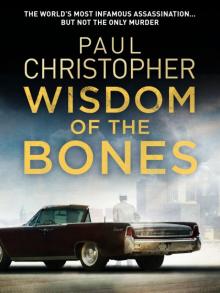 Wisdom of the Bones
Wisdom of the Bones The House of Special Purpose
The House of Special Purpose The Second Assassin
The Second Assassin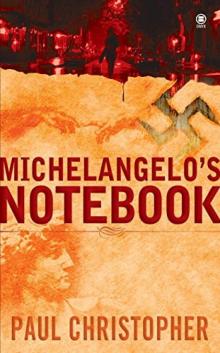 Michelangelo's Notebook
Michelangelo's Notebook Templar Legion
Templar Legion The Sword of the Templars t-1
The Sword of the Templars t-1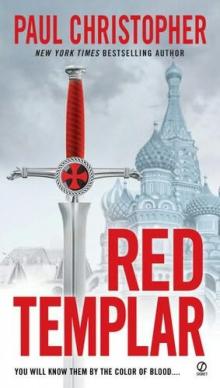 Red Templar
Red Templar The Aztec Heresy
The Aztec Heresy The Templar Legion
The Templar Legion Rembrandt's Ghost
Rembrandt's Ghost Sword of the Templars
Sword of the Templars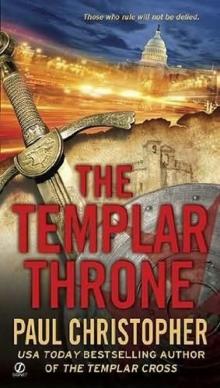 The Templar throne t-3
The Templar throne t-3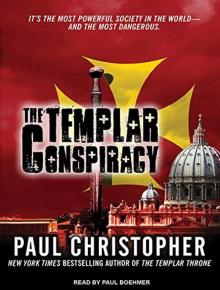 The Templar Conspiracy
The Templar Conspiracy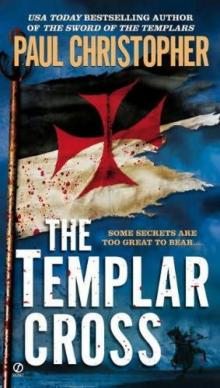 The Templar Cross t-2
The Templar Cross t-2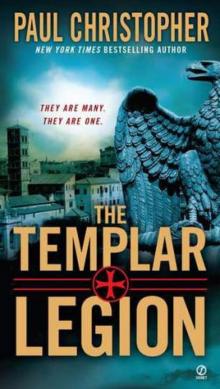 The Templar Legion t-5
The Templar Legion t-5 The Lucifer Gospel
The Lucifer Gospel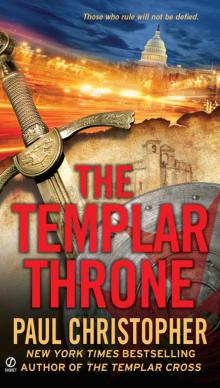 Templar Throne
Templar Throne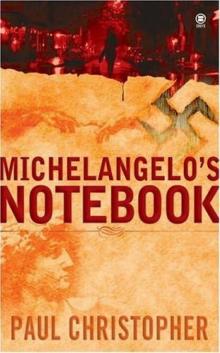 Michelangelo_s Notebook fr-1
Michelangelo_s Notebook fr-1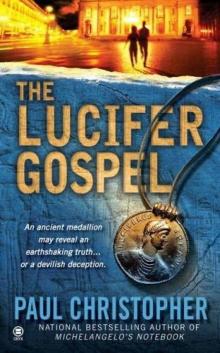 The Lucifer Gospel fr-2
The Lucifer Gospel fr-2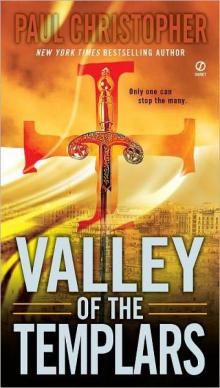 Valley of the Templars ts-7
Valley of the Templars ts-7 Valley of the Templars
Valley of the Templars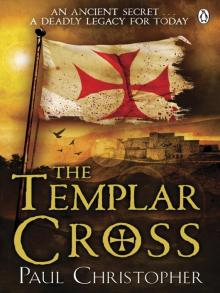 Templar Cross
Templar Cross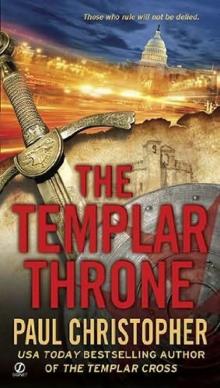 The Templar Throne
The Templar Throne The Templar Cross
The Templar Cross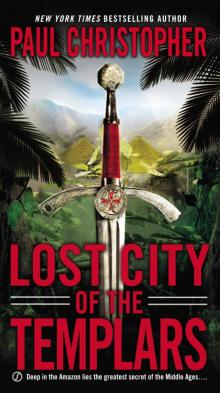 Lost City of the Templars
Lost City of the Templars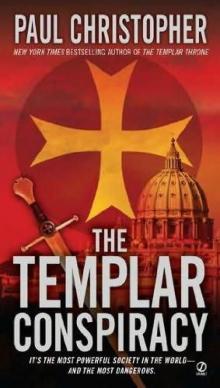 The Templar conspiracy t-4
The Templar conspiracy t-4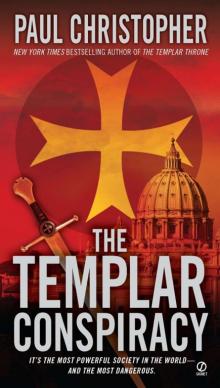 Templar Conspiracy
Templar Conspiracy